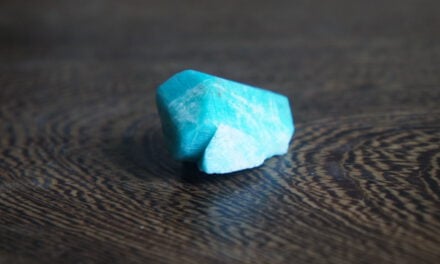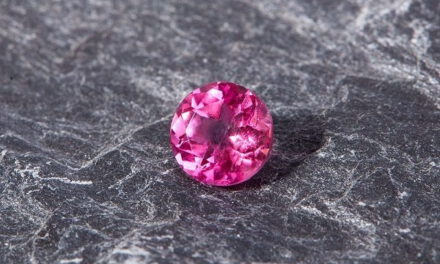Opal is hydrated silicon dioxide, which usually contains 3-20% of water in its structure. Due to its amorphous character, we can classify it as a mineraloid, unlike other forms of silica, which are minerals. Opal’s structure consists of small shaped silica spheres, which are all aligned in a crystal structure. Light passing through those spheres creates a stunning variety of colours which is world-known for this charming gem.
Where Can You Find Opal Deposits?
The first Opal ever mined was found approximately around 4,000 BC in Ethiopia. Nowadays, Opal can be found in various opal mines around the globe, ranging from Rainbow Ridge in Nevada, Mexico, Brazil, Western U.S. to the Czech Republic. However, nearly 95% of the world’s most precious Opals are mined in Australia. The most famous mining locations in Australia where we can find Opal deposits are Lightning Ridge, Coober Pedy, White Cliffs in New South Wales and Cunnamulla district in Queensland. Australia produces many different varieties of precious Opal, including white, crystal, black Opal and Boulder Opal. We’ll talk about them later.
How Does Opal Form?
Opal forms during seasonal rains in regions such as Australia’s semi-desert when water soaks the ground and picks up silica from sandstone. It then carries the dissolved silica (a compound of silicon and oxygen) into a crack and a thin layer of underground sedimentary rocks. The water evaporates and leaves silica deposits. After several cycles and many years – an opal is formed.
The Mesmerizing Colours of Opals
Opal is world-known for its unique display of rainbow colour called play-of-colour, or opalescence. There are two types of Opals: precious and common and only the precious opal shows the play-of-colour fenomen. As said before, the natural Opal consists of tiny silica spheres stacked in a pattern. As the light flashes through those silica spheres, the waves of light diffract or bend. The bending of the waves breaks them into spectral colours (colour of the rainbow), and a play-of-colour occurs.
The end-up colour is different based on the size of the spheres. For example, the spheres that are about 0.1 microns produce the colour violet. On the other hand, those that are 0.2 microns display red. Anything between is the remaining colours of the rainbow. Black Opal is the rarest among and grey Opal, white Opal or green is the most common.
Types of Natural Opals
White Opal
White Opal, also called Milk Opal, has a white milky or slightly grey base colour and displays a stunning pastel spectrum of colours. This natural Opal is the most common Opal. However, they don’t show their pastel spectrum as much as other Opal stones due to their light base colour. However, they are perfect for Opal engagement rings, thanks to their elegant and feminine look.

Black Opal
Black Opal is the rarest and most valuable genuine Opal on the Opal market. It is also the most famous Australian Opal, and all Black Opals come from Lightning Ridge in Australia. The name “Black Opal” may suggest that the gem is all black, but that’s not true. The stone has a dark background or dark brown background, but the stone reflects the beautiful spectrum of green, blue and dark grey tones of colour.
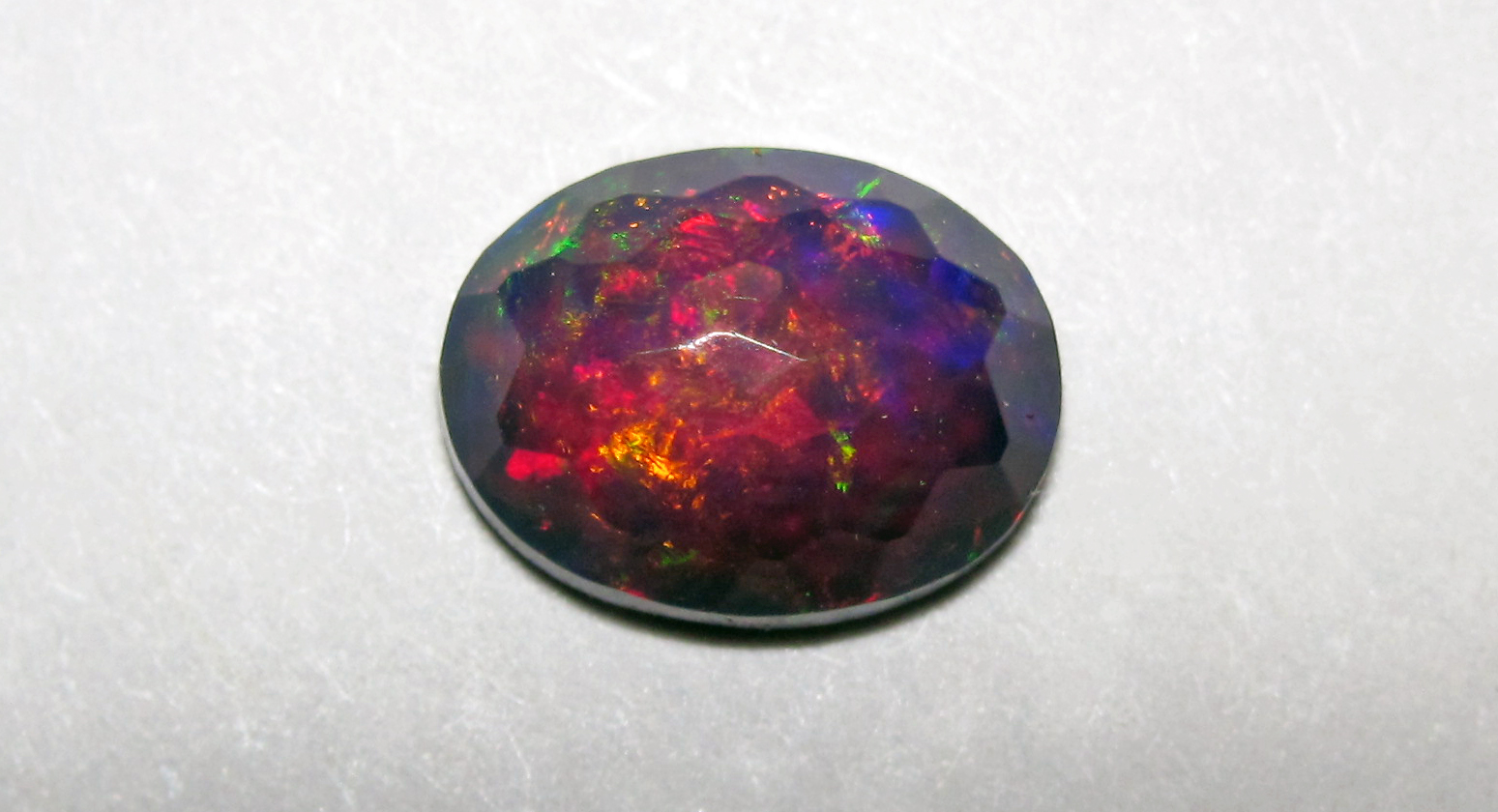
Boulder Opal
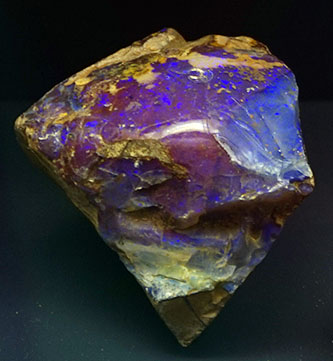
Boulder Opal is a variety of precious Opal, which has the host rock as a part of the gem. Just a tiny vein of Opal is usually present in the host ironstone rock, however. Boulder Opal can be dark or light – it all depends on the surface of the host rock. Also, Boulder Opals are prone to cleaving, and when the cleave happens, the Opal splits and reveals the two Opal surfaces, which are naturally polished.
Fire Opal
Fire Opals are transparent to translucent Opals that have warm fiery orange-red colour. It usually does not show any play-of-colour, but some bright green light flashes are seen within the Opal surface. The most famous source of Fire Opals is the state Querétaro in Mexico. Every Mexican Opal found in this area is called the Mexican Fire Opal. Also, Fire Opals that do not show play-of-colour are usually called the jelly Opals.

Crystal Opal/Water Opal
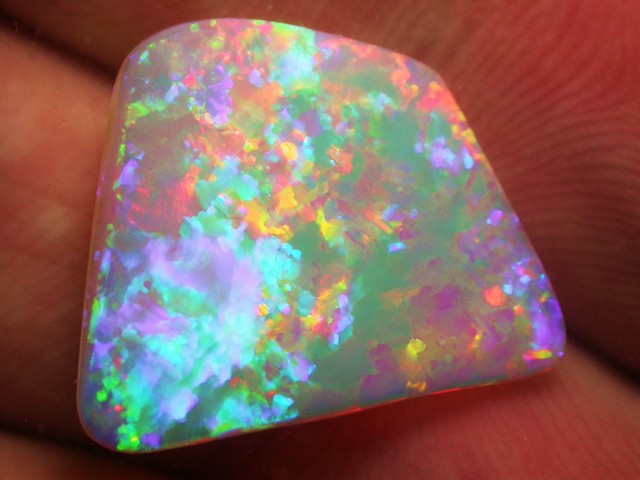
Crystal Opals, also called Water Opals, are naturally transparent and translucent Opals that display a full spectrum of colours. The play-of-colours very often appears inside the Water Opal, so the Opal occurs colourless, and the spectrum of colour is minimal.
Blue Opal/Peruvian Opal
This Opal is an opaque blue-green Opal, which is only found in Andes Mountains. The most valuable ones usually have a clear blue colour and are faceted or cut into cabochons.
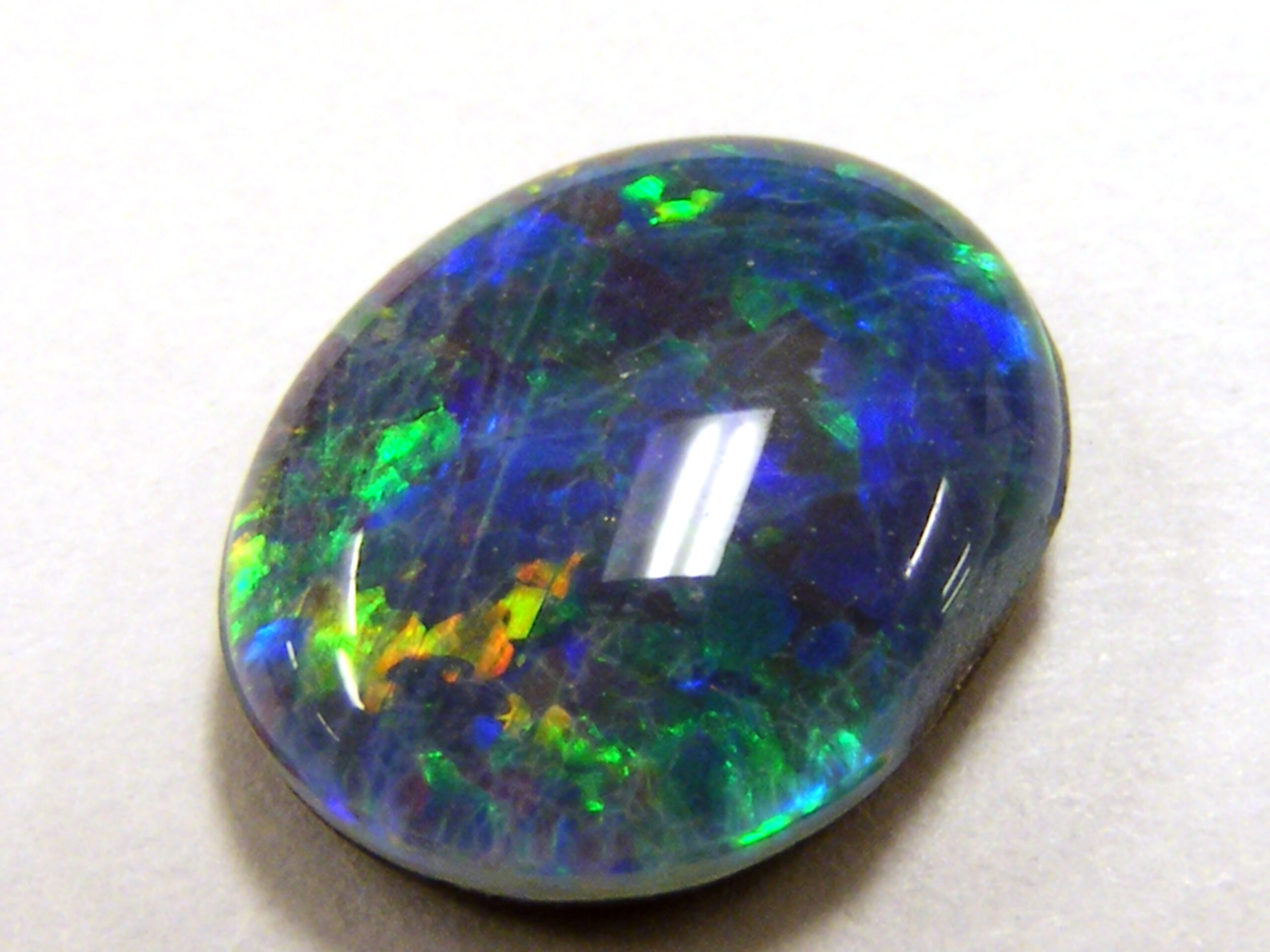
Unique precious Opal jewellery
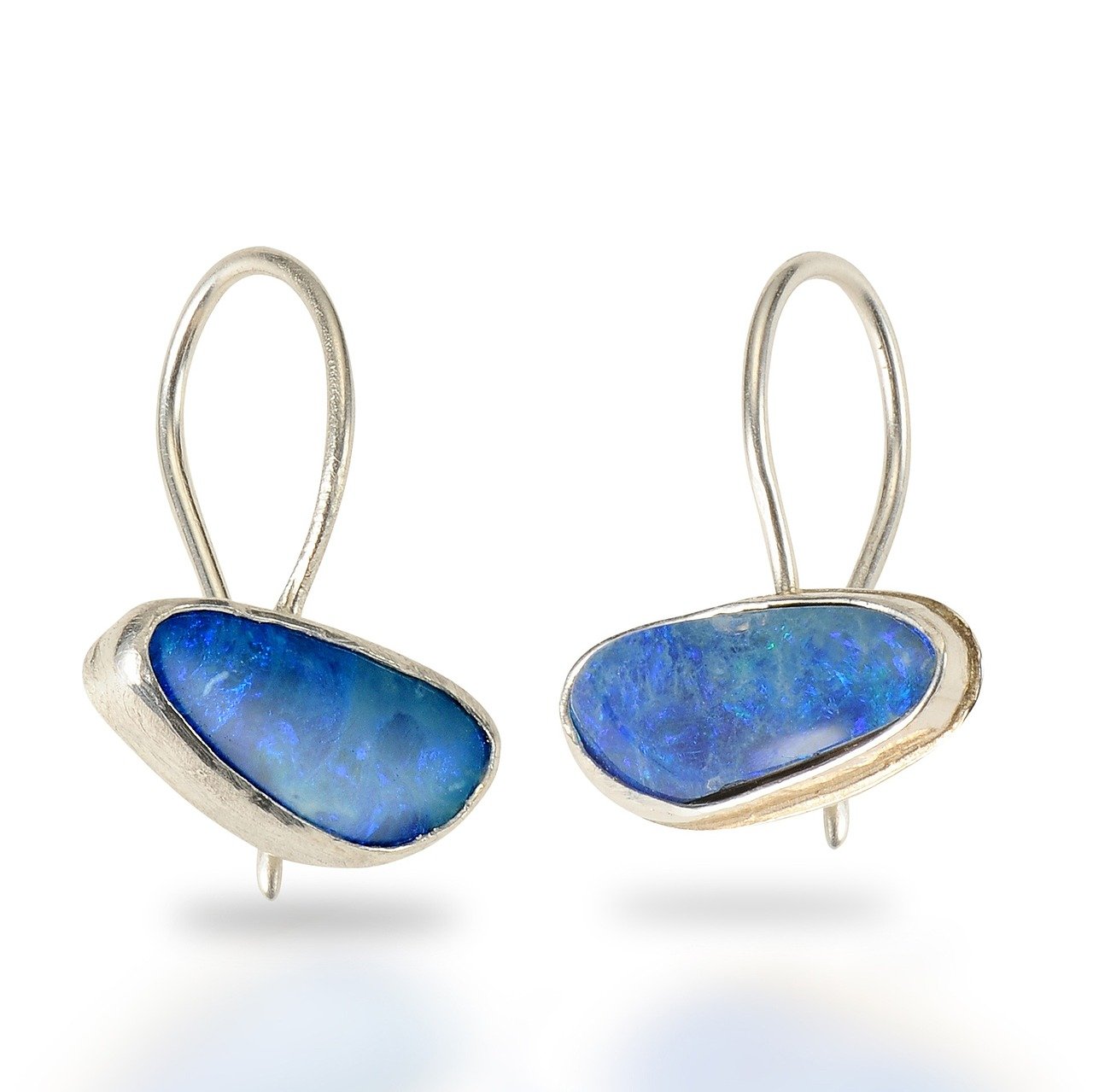
Every Opal gemstone is unique, and unlike Diamond, Emerald or a Ruby, Opal does not fit stereotypes. Opals are among the most popular gems, and they can be a fashionable and modern jewellery piece of not only any lady but also any gentleman. For example, Boulder Opal designed in a silver or leather wristband looks perfect on any man’s wrist.
Opal rings are great for displaying the gemstone’s play of colour, as they move constantly, and the light follows them everywhere. You can wear your Opal ring daily, but make sure to have the right setting, so your precious Opal doesn’t chip or scratch. Silver or gold boundary settings are standard due to their ability to surround and protect the gem from any damage.
Opals are often cut into various shapes, such as hearts, rectangles, triangles or even into small animals. Some jewellers also combine this beautiful Opal gemstone with other gemstones to create unique art pieces.


